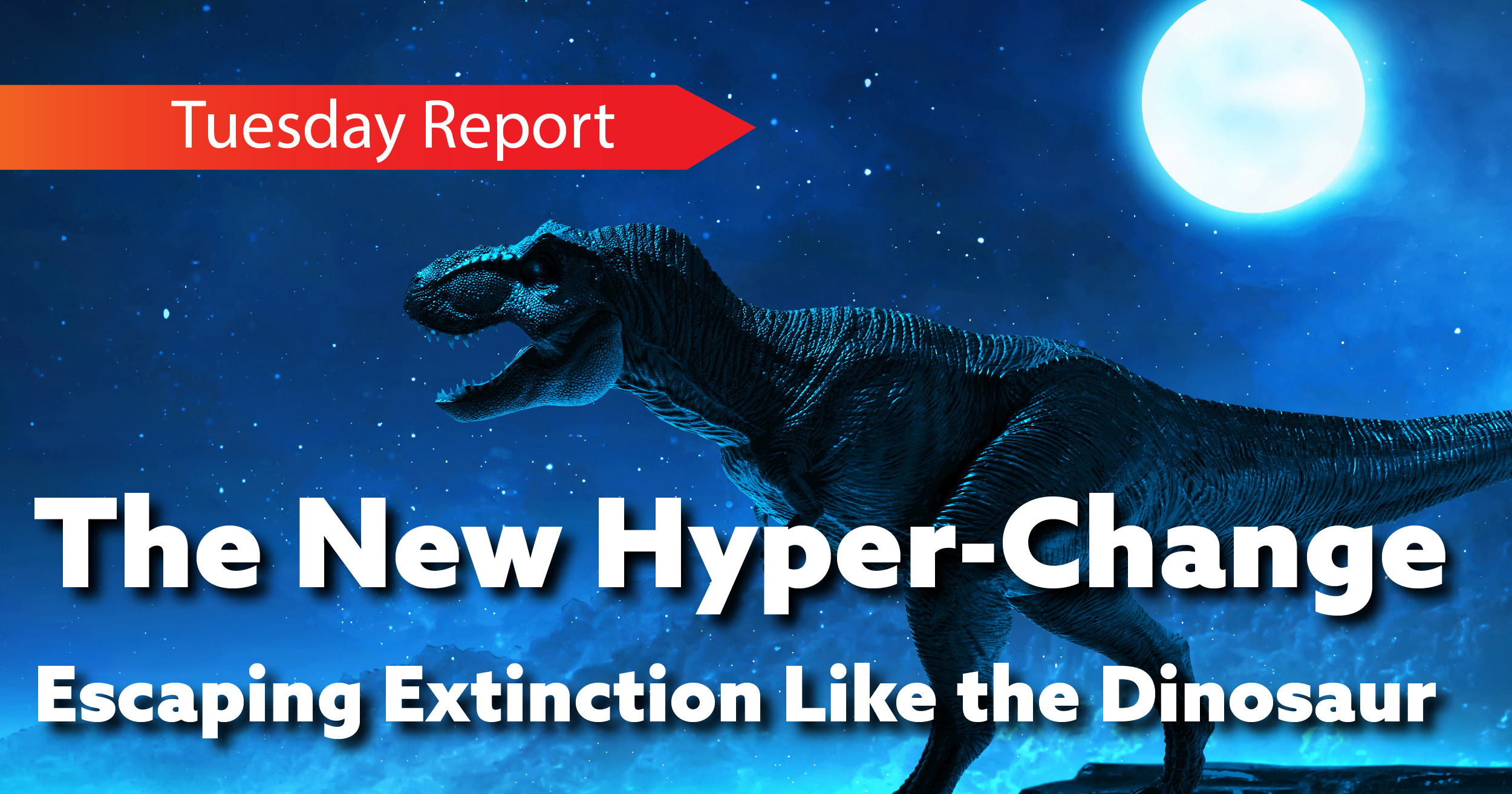Many of you have read The 5 Dysfunctions of a Team, by Patrick Lencioni, a business book written in the form of a novel. The book is the best portrayal of a dysfunctional team and how they aligned themselves for success. The book is fictional, but the situations and people are real.
The following is also a fictional story written in the tradition of Lencioni, highlighting the Delta model of Alignment-Based Growth. Jeff Schultz, president of CenterPoint, Inc., faces a disintegrating market and a Leadership Team unaware of the looming danger. Jeff saves his company with the principles of Alignment- Based Growth. We think you’ll enjoy the story. And while the story is fictional, it is drawn from our decades’ experience in developing and implementing Alignment-Based Growth; so the fiction is based on fact and actual experience.
Jeff Schultz, Founder and CEO of CenterPoint, Inc. gazed across his laptop in his home office out over the lake bathed in the morning sun behind his house, his boat bobbing at the dock, unused for weeks—no time for recreation with the issues facing the company.
A flock of ducks paddled past, quacking cheerfully, so peaceful and serene. Jeff envied the ducks, so unaware.
Jeff sensed that both he and CenterPoint had become “sitting ducks,” ready at any time to get blown out of the water. Jeff’s calculations led him to believe that CenterPoint had about two years before it was no more if it did not change.
When Jeff founded CenterPoint five years ago, it was the star of the startups. It was truly one of those rare game-changers. It developed a software system that connected to almost any system of any age and eliminated steps and processes that created a competitive edge with enormous savings and speed.
The acceptance in the marketplace was phenomenal. The sales team literally could not get to all of the prospects who wanted to buy. The revenues were enormous, and investors clamored for a piece of the action.
But in year three, revenue dropped for the first time ever by 3%. No one was concerned; everyone thought the drop was a fluke. But then revenues began to flatten, then fall month by month—and in the last quarter they plunged.
To Jeff, there were a series of factors. Major clients had been telling them for a long time that their product had some significant glitches, but IT couldn’t completely resolve them. Then there were angry emails from time to time asking when version 2.0 would be released.
At first CenterPoint had the market practically to themselves. Then there were competitors, but mostly bad imitations of the CenterPoint product. CenterPoint felt their technology was still unassailable in the marketplace.
But then suddenly the competition was getting really good, and some were now on their version 4.0 while CenterPoint was still hoping to release version 2.0 “soon.” People were saying that CenterPoint needed more products, and everyone agreed, but none were forthcoming. There were people saying that the CenterPoint product was based on old thinking.
Then came the death blow.
CenterPoint had always sold their product as an add-on. Suddenly new systems were coming out that would carry all CenterPoint’s same functionality as part of the system, loaded and ready. Now there would be no need to buy CenterPoint. CenterPoint would still have a market because many of companies would not upgrade for a couple of years, but it would be a dying, shrinking market and one that was “old-fashioned,” not “cutting edge.”
That’s why Jeff thought CenterPoint could buy some time for a couple of years.
Jeff Schultz was in crisis mode, but not his leadership team. Jeff’s leadership team felt that Jeff was being an alarmist. If everyone would perform their functions well, the company would regain its position. They all believed that they knew what was going on, only each member of the team had a different opinion of the causes and solutions. Discussions of the situation were chaotic, ending in focusing back on reporting on operational issues.
The reality was that Jeff’s leadership team was in the process of disintegrating. He couldn’t really get their attention. They had joined a company exploding with cash and energy and they had no appetite for solving the problems of a company in trouble.
Jeff’s leadership team worked long hours bolstering the functions they were hired to lead, which consumed their energy. They had little time to do anything more than give reports in their meetings. Time to work on long-term issues was rarely available. They were not personally close to each other. They came from different educational backgrounds, cultural norms, and grew their skills in companies with very different ways of operating. They had no time to solve the looming crisis.
“Thanks for reaching out, Jeff,” Molly Mitchel began on Zoom with Jeff. “I was on a webinar about Alignment-Based Growth when you texted, and since you never do that, I knew I had to respond immediately.
Molly was well-known for her expertise in creating high performing teams. She was an early adopter of Alignment-Based Growth and used it with all her clients.
“No doubt, Jeff, that CenterPoint is approaching the cliff, and the problem is that your leadership team is saying full speed ahead! It’s frustrating and scary.
“From what you’ve told me, CenterPoint’s situation is in fact solvable. You still have a market for your product. Your cash position is solid. Your board believes in you and is behind you. You have plenty of sources for capital. There are new products waiting in the wings, if you and your executive team move quickly.”
“That’s true, Molly. We still have plenty of resources and a window of time to succeed,” responded Jeff.
“But Jeff, like a lot of organizations, you haven’t solved the ‘people puzzle.’ You’ve selected the best but they’re not giving you their best. You’ve done an amazing job creating a product and selling it. Your team uses Agile development processes very well. Your sprints are solid. You have invested heavily in technology. You have committed huge resources to your sales operations.”
“That’s true, Molly. We pride ourselves on being on the cutting edge, and we’ve won several awards.”
“But Jeff, what about your key leaders? What have you spent aligning them as a team? You’re like the NFL in one sense. You have spared no expense to recruit the best players. But here’s the difference between you and the NFL. You send them out onto the field and expect that they know how to block and tackle and throw the ball. And more importantly, you expect that they know how to play like a championship team. That may have worked in the 20th Century, but it’s a new day.”
“Truth be told, Molly, we haven’t focused on team performance. Said it took too much time and money. We’ve always considered team training as fluff and recreation, like the time we all put on stilts and walked across a river. It was a lot of fun, but when we came back to the office and got the bill, we decided never to do it again.”
“So you haven’t spent the time, money, and energy to coach your leaders into alignment. That’s why you are in crisis mode. Markets change and leaders must be aligned and pivot together. You have to align your leadership in order to change direction. Right now in meetings they report out to each other, advise and encourage each other, but they’re not aligned. They come from different backgrounds and experiences and never think about aligning their skills to think and function like a team. And they have no idea what the imperative is that they should align behind. In other words, they wouldn’t even agree on what the goal for CenterPoint actually is.
“If you had trained your leaders as a team, they would have solved your issues two years ago, and you wouldn’t be spending this time and money in crisis mode. You didn’t need this and didn’t have to go through it. If you would have had the tools and techniques of Alignment-Based Growth, you wouldn’t be going through this.
“Even changing out the whole leadership team and hiring the very best talent won’t solve your problem. Alignment doesn’t happen by accident. It is an intentional process. Without leadership team alignment, CenterPoint can’t muddle though this crisis.”
“I get what you’re saying about the need for alignment, Molly, but there are all sorts of resources I’ve seen from experts like you, books and people in the organization who are great leaders. What’s the process in Alignment-Based Growth that makes this different?”
“Great question, Jeff. With your present talent and resources, why should you do the process of Alignment-Based Growth? The basic question is, how are things working? Are your results outstanding, constant, and predictable?”
“I’d answer back, ‘is anyone’s?’ It’s the same for everyone, wouldn’t you honestly say?”
“Jeff, I would have agreed with you just a few years ago. But with the principles of Alignment-Based Growth, teams do the impossible and achieve what nobody would believe could happen.”
“Molly I understand some of the basic principles, but could you take me through ABG principles again?”
OK, here are some basic principles.
- ABG aligns individual skillsets, personal agendas, and individual priorities behind an imperative. If a team doesn’t know where members are coming from they can never go anywhere together. This leadership team has been together for years, and they work their hearts out every day using their own playbooks that are just enough different to never align. Your team must begin by finding out where they’ve been, what important, and what they value as a group. This is the beginning of alignment.
- Creating the Imperative for moving forward. I’ve heard it on the grapevine that a couple of your people are talking to headhunters. Others say they just want to ride out the storm and see what’s left standing. You have to create the reason, the imperative, that they would commit to put their all into CenterPoint for the next two years in order to create a company that delivers results over time—a going concern that’s here to stay. And what’s in it for them if CenterPoint is wildly successful again? The Imperative is critical…and it’s often not immediately obvious, which is why companies like CenterPoint drift along without figuring it out. That can work when the market it at your back as it was in CenterPoint’s first two years. But it will never deliver outstanding results in a market inflection like you’re experiencing now. And EVERY company goes through inflections. Trust me.
- Developing performance data. No one in their right mind would try to run a company without financial data. Yet our best shot at true organizational data is what people have learned gossiping on Zoom. How do you know how you’re doing as a team? Athletic teams amass data on every aspect of player performance. Yet all we know about performance is based on the annual review.
First, are our people in the places where they can give their best? The Myers-Briggs Type Indicator gives us the basic information about our hard-wiring, where we’ll do our best, and how we’ll work as team players. The FIRO-B gives us information about EQ and leadership style. With scientific data we’ll know where we do our best.
The 360-degree assessment shows us the revealing picture of how we’re doing based on the insight of those around us who see us operate every day. In the environment of managers who may not even see us for days and weeks, the 360 data is fundamental. The TEAM 360 gives similar data on how effectively the team is working as a team. Is the team seen as effective? Has it communicated strategy and direction to the organization? Does the rest of the organization get the same message from each member of the team…or do they hear conflicting messages? - Building a team with skin in the game. As we develop, often for the first time, the data on team performance, it’s like an organization that gets its first financial report. Now you know what the numbers tell you to do.
In the same way, with valid performance data, you can build a team with skin in the game. They’ll be pressing you to move forward before you press them. Those who accept their role, with skin in the game, create a Game Plan that specifically draws the picture of their commitment to the imperative of the next two years to achieve their top performance.
- Align the next levels of the organization. Once this clarity on the imperative is established and alignment behind it has begun at the executive level, the process flows down to the next levels of leadership and from them down to the rest of the organization through structured cross-functional collaborations.
So that’s where the conversation ended between Jeff Schultz and Molly Mitchell. Molly had to get back to her webinar and Jeff went on to his next appointment. Both Molly and Jeff agreed that CenterPoint had about two years of life, and that the issues would not go away. They both agreed that without alignment on what the issues are and how to conquer them and without a common imperative to commit to solving them, CenterPoint faced a dire future.
They agreed to meet again next week. How does the story end? With realized hopes or dashed dream? It will be all about alignment.






